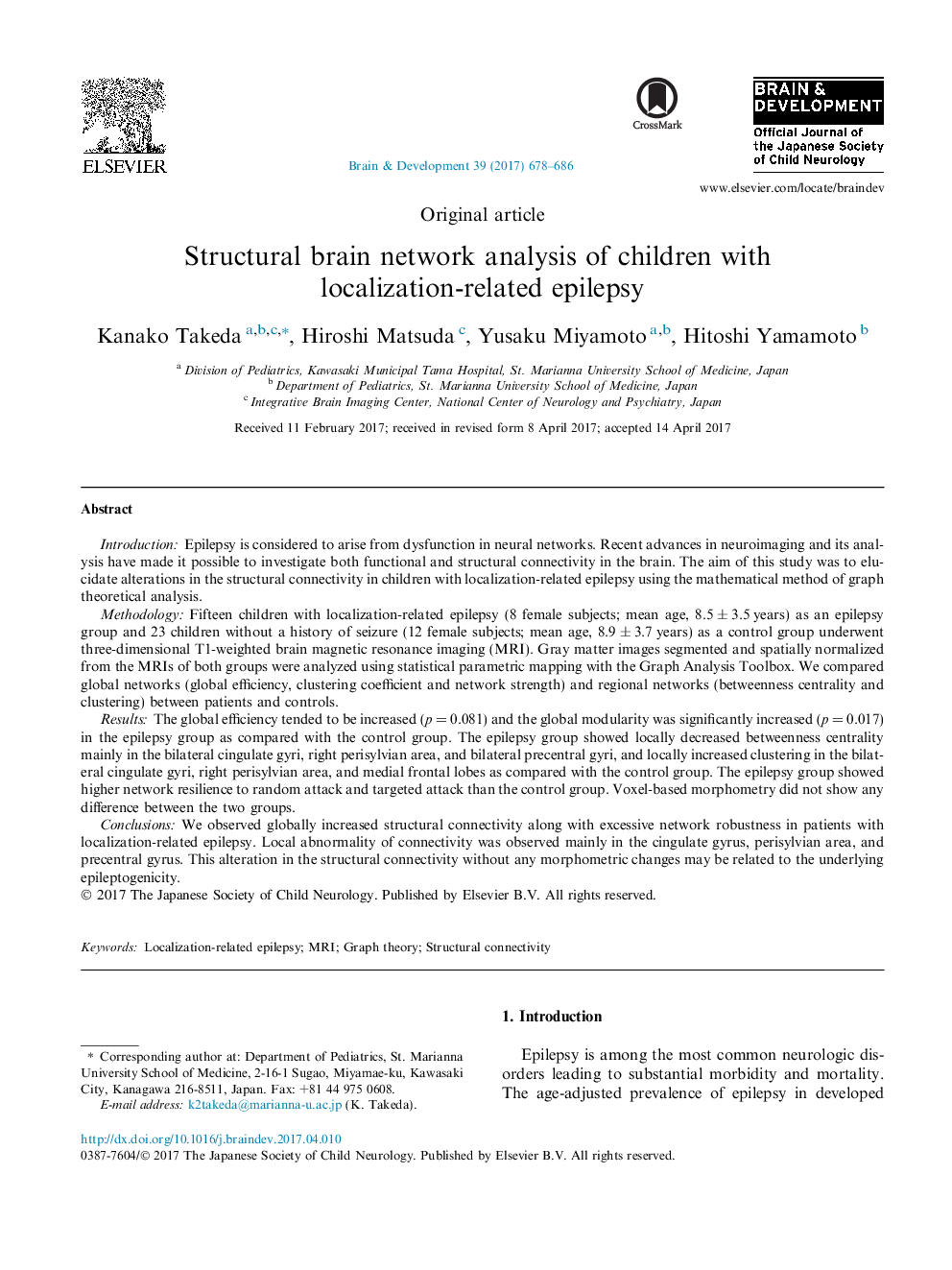| کد مقاله | کد نشریه | سال انتشار | مقاله انگلیسی | نسخه تمام متن |
|---|---|---|---|---|
| 5626378 | 1406318 | 2017 | 9 صفحه PDF | دانلود رایگان |
IntroductionEpilepsy is considered to arise from dysfunction in neural networks. Recent advances in neuroimaging and its analysis have made it possible to investigate both functional and structural connectivity in the brain. The aim of this study was to elucidate alterations in the structural connectivity in children with localization-related epilepsy using the mathematical method of graph theoretical analysis.MethodologyFifteen children with localization-related epilepsy (8 female subjects; mean age, 8.5 ± 3.5 years) as an epilepsy group and 23 children without a history of seizure (12 female subjects; mean age, 8.9 ± 3.7 years) as a control group underwent three-dimensional T1-weighted brain magnetic resonance imaging (MRI). Gray matter images segmented and spatially normalized from the MRIs of both groups were analyzed using statistical parametric mapping with the Graph Analysis Toolbox. We compared global networks (global efficiency, clustering coefficient and network strength) and regional networks (betweenness centrality and clustering) between patients and controls.ResultsThe global efficiency tended to be increased (p = 0.081) and the global modularity was significantly increased (p = 0.017) in the epilepsy group as compared with the control group. The epilepsy group showed locally decreased betweenness centrality mainly in the bilateral cingulate gyri, right perisylvian area, and bilateral precentral gyri, and locally increased clustering in the bilateral cingulate gyri, right perisylvian area, and medial frontal lobes as compared with the control group. The epilepsy group showed higher network resilience to random attack and targeted attack than the control group. Voxel-based morphometry did not show any difference between the two groups.ConclusionsWe observed globally increased structural connectivity along with excessive network robustness in patients with localization-related epilepsy. Local abnormality of connectivity was observed mainly in the cingulate gyrus, perisylvian area, and precentral gyrus. This alteration in the structural connectivity without any morphometric changes may be related to the underlying epileptogenicity.
Journal: Brain and Development - Volume 39, Issue 8, September 2017, Pages 678-686
